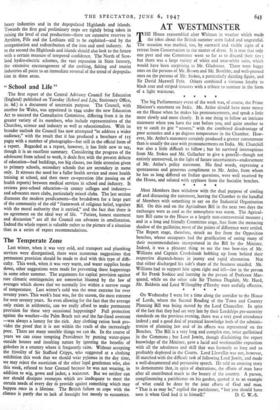School and Life"
The first report of the Central Advisory Council for Education (England) published on Tuesday (School and Life, Stationery Office, 2S. 6d.) is a document of uncertain purpose. The Council, with another for Wales, was appointed in 1944 under the new Education Act to succeed the Consultative Committee, differing from it in the greater variety of its members, who include representatives of the Churches, science and industry as well as educationalists. With its broader outlook the Council has now attempted "to address a wider audience," with the result that it has produced a brochure of 115 pages with a number of photographs—but still in the official form of a report. Regarded as a report, however, it has little new to say, though it is an excellent summary. Considering the progress of the adolescent from school to work, it deals first, with the present defects of education—bad buildings, too big classes, too little attention given to primary schools, secondary schools that are secondary Ui name only. It stresses the need for a fuller health service and more health training at school, and then more co-operation (the passing on of health reports) between medical services in school and industry. It reviews post-school education—in county colleges and industry— and advocates more clubs, particularly mixed clubs. The last section discusses the modern predicament—the breakdown for a large part of the community of the old "framework of religious belief, together with the moral authority that it carried," and the fact that there is no agreement on the ideal way of life. "Patient, honest statement and discussion" are all the Council can advocate in amelioration. Indeed the whole report is valuable rather as the picture of a situation than as a series of expert recommendations.


































 Previous page
Previous page